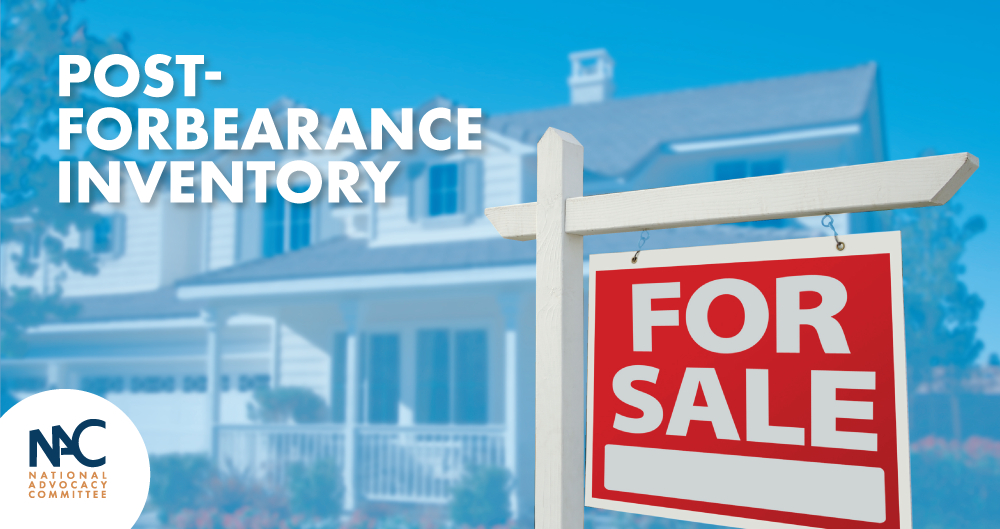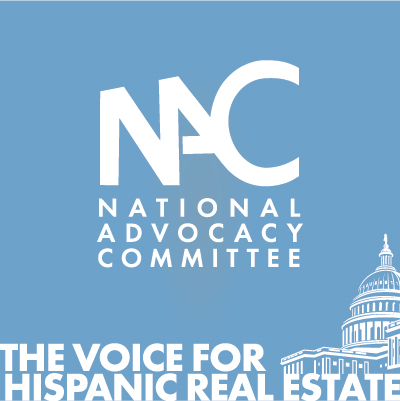Forbearance has ended, will there be an influx of inventory?
Celebrating NAHREP familia, cultura, politics, and grassroots action
November 4, 2021
Qué onda mi gente?!
Did you know that as of September 30 2021, the 1 million + individuals who participated in the COVID-related forbearance programs have started to reach their 18-month cap? There is a huge role for all of us to play here, not only because we need to ensure that we protect the wealth Latinos have created through homeownership over the past few years, but because we should always seek to be a part of the solution. Many Latinos will be confused over what happens next. We need to educate ourselves first so that we can be the best source of information for our clients. But aside from that, we might just have an uptick of inventory this Fall as a result of forbearance expiring and we have to be ready for that.
Right now, individuals who are exiting forbearance face a handful of options:
- Deferral: If they can continue making the monthly payments they were making prior to entering forbearance, their missed payments will be tacked on to the end of their loan.
- Loan modification: If they can’t afford the monthly payments they were previously making because their economic situation hasn’t improved, then they can get a loan modification where they extend the loan often up to 40 years in order to lower the monthly payments.
- Sell the home: Most individuals have equity in their homes. Meaning that rather than foreclosures, many individuals can currently sell their home at a profit.
- Balloon payments not allowed: If individuals have a federally backed loan, balloon payments are prohibited.

LATEST FORBEARANCE DATA
So first let’s level set on how many people we’re talking about. Here’s where we’re at so far:
- 28 percent: According to MBA’s estimate, as of October 17, 2021, 2.21% of servicers’ total portfolio volume is in forbearance (1.1 million homeowners).
- 3 in 4 loans hit limit: 3 out of 4 (1.2 million loans) in forbearance reached the 18-month maximum limit as of the end of September.
- Deferrals most common: 70 to 80 percent of exiting borrowers are opting for payment deferrals (where missed payments are added to the end of the loan), and the rest are exiting forbearances with a need for loan modifications.
- 25% of loans predicted to be sold: Zillow estimates that 1.5 million borrowers set to leave forbearance will opt to list their home for sale (25%).
- Mostly all have equity: According to Black Knight, rising home prices have left only 7 percent of those in forbearance with less than 10 percent equity in their homes even after 18 months of deferred payments.
- Few at risk of foreclosure: CoreLogic predicts that only about 200,000 of the 1.2 million loans in forbearance are at risk of foreclosure.
CFPB SERVICING RULE:
So no, we are not expecting a slew of foreclosures like we experienced back during the Great Recession. Instead, it is sales of these homes that could lead to an uptick of inventory. But in case you’re asked, the Consumer Financial Protection Bureau (CFPB) issued the following rule on what servicers can do before starting a foreclosure procedure:
In June of 2021, the CFPB released a servicing rule that requires lenders to follow 3 steps before starting a foreclosure. This applies to all loans, even those that aren’t federally backed. The CFPB’s rule went into effect from August 31, 2021 through January 1, 2022.
The loan servicer must review a loss mitigation application submitted by the borrower that shows the borrower’s financial and household information, which can help the lender determine next steps.
- Loan servicers must follow state and local laws to verify that the home has been abandoned before proceeding with a foreclosure.
- Loan servicers must make a diligent effort to contact the homeowner before going forward with the foreclosure. Foreclosure is allowable in the event homeowners are a minimum of four months behind on their mortgage, and have been unreachable for more than 90 days.
WE NEED TO EDUCATE OURSELVES IN ORDER TO BE A PART OF THE SOLUTION
There is still a lot of confusion over what happens next: Communities of color are still less likely to ask for help when it comes to exiting forbearance. We need to be on top of it. There is a big need right now to educate struggling homeowners on the post-forbearance, foreclosure and—if needed—home sale processes.
Servicers will be overwhelmed these next few months: Given that the majority of individuals in forbearance will be reaching their 18-month cap this fall, servicers are going to be overwhelmed. Consumers might not get their questions answered in a timely manner, or they might call without being able to speak to someone.
THINGS YOU CAN DO TO BE A PART OF THE SOLUTION:
- Educate yourself.
- Include a discussion about post-forbearance and (keeping your wealth) at your next event.
- Educate your clients on social media on their options.
- Collect stories about what you’re seeing in your market and share them with me.
That’s all mi gente. Un abrazo a todos.

About Noerena Limón
Noerena Limón is NAHREP’s Executive Vice President of Public Policy and Industry Relations. Noerena heads the organization’s policy and advocacy efforts on issues ranging from homeownership, housing inventory, credit access and immigration.
Prior to joining NAHREP, Noerena spent six years at the Consumer Financial Protection Bureau (CFPB) and served as a political appointee under President Obama in the White House Office of Political Affairs.



